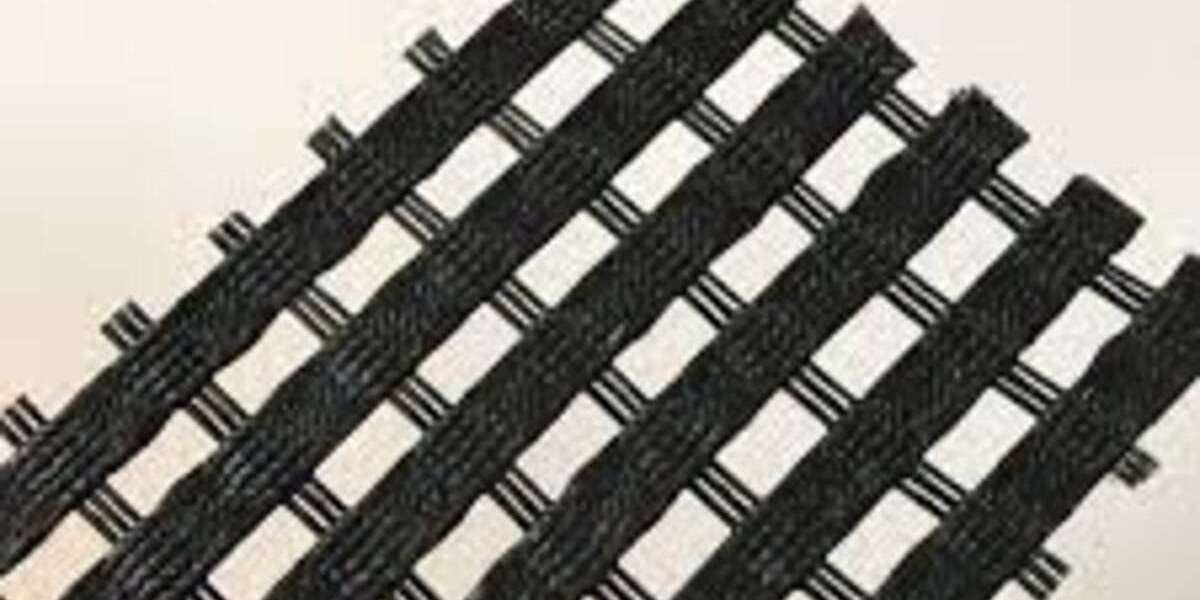In the dynamic field of mining, the pursuit of efficiency, safety, and sustainability is ever-present. As mining operations expand into challenging terrains, the need for reliable ground stabilization solutions has become increasingly critical. One such solution that has gained traction in recent years is the use of uniaxial geogrids. These geosynthetic materials are specifically designed to enhance soil stability and load distribution, making them indispensable in various mining applications.
What Are Uniaxial Geogrids?
Uniaxial geogrids are engineered polymeric materials characterized by a grid-like structure with high tensile strength in one direction. Typically made from materials such as polypropylene or polyester, these geogrids provide durability and resistance to environmental factors. The primary function of uniaxial geogrids is to reinforce soil structures, making them particularly effective in situations where vertical loads are prevalent.The design of uniaxial geogrids allows them to interlock with surrounding soil particles, creating a composite material that enhances overall stability. This makes them suitable for various applications within the mining sector, where ground conditions can often be unpredictable.
Key Applications in Mining Operations
- Slope StabilizationOne of the most critical applications of Uniaxial Geogrid in India in mining is slope stabilization. Mining operations often involve excavating steep slopes to access mineral deposits. These slopes can be susceptible to erosion and landslides, posing significant risks to both personnel and equipment. By incorporating uniaxial geogrids into slope designs, operators can effectively reinforce the soil, reducing the likelihood of failure. The geogrids help distribute loads more evenly across the slope, enhancing its overall stability.
- Embankment Reinforcement Embankments are frequently constructed in mining sites to facilitate access roads or support infrastructure such as conveyor belts and processing plants. Uniaxial geogrids play a vital role in reinforcing these embankments by providing additional tensile strength and preventing deformation under heavy loads. This reinforcement is crucial for maintaining the integrity of the embankment over time, especially when subjected to dynamic forces from heavy machinery.
- Retaining Walls In mining operations where excavated pits require containment, retaining walls are essential structures. Uniaxial geogrids can be integrated into these walls to enhance their structural capacity. By reinforcing the backfill behind the wall, geogrids help prevent soil movement and ensure that the wall remains stable under varying load conditions.
- Road Construction and Maintenance Access roads are vital for transporting materials and personnel within mining sites. The incorporation of uniaxial geogrids into road construction projects significantly improves the performance of subgrade layers. By distributing loads over a larger area, these geogrids enhance the durability and lifespan of access roads, reducing maintenance costs associated with frequent repairs.
- Ground Improvement In areas with poor soil conditions, uniaxial geogrids can be employed for ground improvement before construction begins. They help increase the load-bearing capacity of weak soils by reinforcing them and reducing settlement issues during mining operations. This application is particularly beneficial in soft or unstable ground conditions where traditional methods may not suffice.
Advantages of Uniaxial Geogrids
The use of uniaxial geogrids in mining operations offers several advantages:
- Cost Efficiency: By improving soil stability and reducing the need for extensive earthworks, uniaxial geogrids can lead to significant cost savings throughout a project’s lifecycle.
- Durability: Made from high-quality polymers, these geogrids exhibit excellent resistance to environmental factors such as moisture, chemicals, and UV radiation, ensuring long-term performance even in harsh conditions.
- Ease of Installation: The lightweight nature of uniaxial geogrids simplifies handling and installation processes on-site, allowing for quicker project completion without compromising quality.
- Versatility: Uniaxial geogrids can be utilized across various applications within mining operations, making them a flexible solution for addressing different challenges.
The Role of Geogrid Manufacturers and Suppliers
In India, several manufacturers and suppliers specialize in producing high-quality uniaxial geogrids tailored for mining applications. These companies play a crucial role in ensuring that mining operators have access to reliable products that meet industry standards.Uniaxial geogrid manufacturer focus on utilizing advanced technologies and materials to ensure their products deliver optimal performance under demanding conditions. Meanwhile, uniaxial geogrid suppliers facilitate distribution networks that make these essential materials readily available for various projects across the country.
Conclusion
The integration of uniaxial geogrids into mining operations represents a significant advancement in ground reinforcement technology. Their ability to stabilize slopes, support embankments, enhance road construction, and improve ground conditions makes them indispensable tools for modern mining practices. As demand for efficient resource extraction continues to rise, so too does the importance of reliable solutions like uniaxial geogrids.With key manufacturers and Uniaxial Geogrid Suppliers in India providing high-quality products tailored for specific applications, mining companies can ensure safer operations while optimizing costs and enhancing productivity. The future of mining will undoubtedly benefit from continued advancements in geosynthetic technologies such as uniaxial geogrids—paving the way for more efficient resource extraction methods while minimizing environmental impact.By embracing these innovative solutions, the mining industry can navigate its challenges more effectively while contributing to sustainable development goals through improved operational practices. As uniaxial geogrid technology continues to evolve, its applications will likely expand further, offering new possibilities for enhancing safety and efficiency in mining operations worldwide.
Frequently Asked Questions (FAQs)
How does uniaxial geogrid support soil in earthquake-prone areas?
In earthquake-prone regions, uniaxial geogrid provides additional stability to soil structures by increasing tensile strength and minimizing soil displacement. Its flexibility and strength help absorb ground movement, reducing the likelihood of slope failure during seismic activity.
What are the installation considerations when using uniaxial geogrid on steep slopes?
On steep slopes, uniaxial geogrid installation requires careful placement, often with anchoring or tiered layers for stability. Compaction of each soil layer over the geogrid is essential to ensure a firm hold, and additional reinforcement or drainage solutions may be needed.
Can uniaxial geogrid be used with vegetation for green slopes?
Yes, uniaxial geogrid can be installed beneath vegetation to stabilize green slopes. The grid provides reinforcement while allowing plants to establish roots, which further stabilizes the slope and enhances soil retention through natural means.



